How to plant a hydrangea outdoors in the spring?
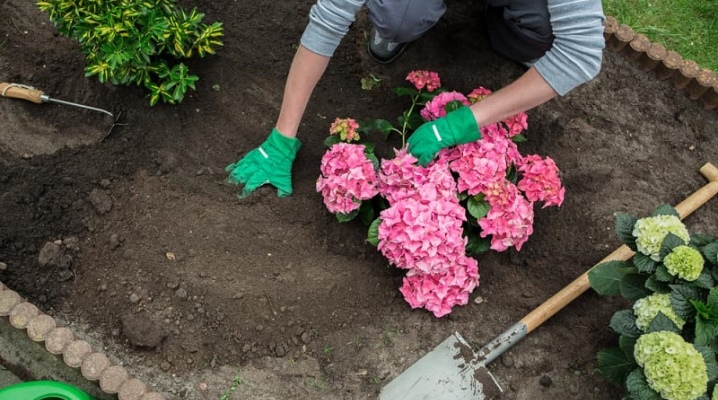
Lush hydrangea inflorescences are a wonderful decoration for every garden plot and vegetable garden. This perennial shrub is not picky to care for, resistant to many viral and fungal diseases, and at the same time pleases its owners with charming white buds every year. Consider how to properly plant a hydrangea in open ground in the spring.

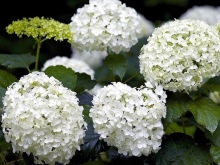

Optimal timing
Half of the success in growing any garden plant lies in the well-chosen planting conditions: the type of soil, the protection of the chosen place from the wind, as well as the timing of planting the plant on the site. Experienced gardeners are sure that spring is the optimal time for planting hydrangeas in open ground.
This opinion is considered correct for several reasons.
- The growing season, that is, the time of the most active growth of shoots and roots of garden hydrangea, begins in mid-spring, so the plant has more chances to take root in a new place.
- Spring is the perfect time for disembarkation in terms of weather conditions. Increasing warmth, soft and non-aggressive sunlight, moderate humidity - all this has a beneficial effect on the growth of garden plants.
- Hydrangea, planted in open ground in spring, with a high degree of probability will be able to acquire a strong root system, which will allow it to painlessly survive the cold period of the coming autumn and winter frosts.

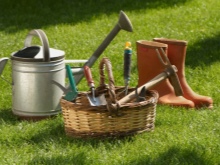

The timing of planting hydrangeas may vary slightly depending on the region and the climatic conditions that are inherent in it. The best landing times for some regions will be listed below.
- Territories of central Russia (for example, Moscow region). On plots in this area, hydrangea should be planted in April 13-15.
- Territories of the northern regions (for example, the Urals, Siberia, the Leningrad region). Here, it is best to shift the timing to summer - the optimal time will be the end of April or the first days of May.
- In the southern regions (such as the Krasnodar Territory or the Caucasus), the timing for planting hydrangeas should, on the contrary, be shifted to early April - to the first warm sunny days.
Some gardeners prefer to be guided by the lunar cycles when choosing specific dates for planting garden plants.


If we consider the lunar calendar for the current year, then the best dates for planting hydrangeas in April will be the dates: from 6 to 8, from 11 to 13, from 15 to 17, from 24 to 26, as well as 39 and 30. With regard to favorable May dates, these are: from 6 to 8, from 10 to 17, from 21 to 23, from 26 to 28, as well as 31. Spring days, on which you definitely should not plant hydrangea in open ground, are April 5 and 19 and May.
Do not forget to be guided by favorable weather conditions when planting hydrangeas, regardless of the date chosen.
It would be best to choose a calm, cloudy, but warm day - in such conditions, it will be easiest for a hydrangea seedling to get used to a new place.


Selection of seedlings
One of the important points of planting and growing any garden plant is correctly selected and purchased seedlings. During the planting process, there is a possibility that some of the seedlings will be damaged, sick, or simply will not take root in a new place. To reduce the likelihood of planting such seedlings, always try to buy them only from specialized nurseries and garden centers. To assess the quality of a store's products, just check the reviews about it on the Internet.
If you are already an experienced gardener who has been growing garden flowers for more than one year, then the best seedlings can always be obtained by cuttings, but in the case of hydrangeas, obtaining full-fledged seedlings can take a lot of time.


Today, in gardening stores, you can find hydrangea seedlings of only two types: with open and closed root systems (OKS and ZKS, respectively). The choice between these two types is always quite difficult. One side, seedlings with a closed root system are more likely to take root in a new place together with the "mother" soil clod... On the other hand, the earthen lump does not allow to correctly assess the integrity of the plant root system. The danger of buying seedlings with ACS is that at the time of sale they are together (in a kind of bunches), which means that potential diseases and fungi from diseased roots of other seedlings can infect healthy plants.
The safest most often are seedlings with ZKS. For to find out whether a seedling has been in a container for a long time or is sold with an earthen clod, just look at the presence of weeds and shoots of other plants in the ground... This is a good sign that the hydrangea has been in the container for a long time (it may even have overwintered in it) and has acquired its own strong root system.
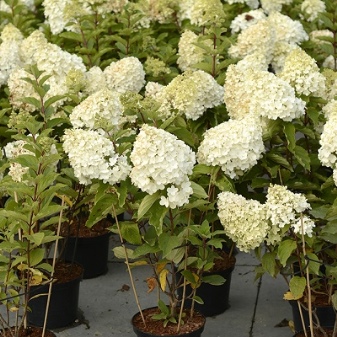

If you want to competently approach the choice of a hydrangea seedling, pay attention to a number of factors.
- Carefully examine the root system of the plant: the presence of mold, rotten or dry roots indicates poor immunity of the seedling or some kind of disease. And it will also be useful to smell the roots of the plant - often sellers remove mold plaque from the plant in advance to give it a good appearance.
- The seedling should look healthy and intact. Any cracks, broken shoots or roots indicate careless handling of the plant.
- The root system of the plant should be slightly damp to the touch; avoid options for seedlings with completely dry roots.
- Evaluate the plant's root system in terms of its development - it should be voluminous, spreading and healthy. To estimate the number of roots in seedlings with ZKS, it is enough to slightly lift the plant out of the pot (by the root collar) and inspect the walls of the earthen coma - roots should be visible there.
In addition, some containers have special drainage holes through which the root system of the plant can also be assessed.


After purchasing a seedling, do not rush to plant it in open ground - wait for favorable weather conditions. Before that, you should competently approach the storage of the seedling within the walls of the apartment. It is best to choose a dark and cool room for storing a flower. Watering the seedling is often not worth it - once every 1.5-2 weeks is enough. You can store the plant in a purchased container, where it has already taken root, or transplant it into a larger container with a pre-selected acidic or slightly acidic soil.
As soon as the average outdoor temperature stably keeps above + 10 ° C, you can safely move the plant from the room to the open air (for example, to a balcony or veranda) so that it is already there waiting for planting in open ground.
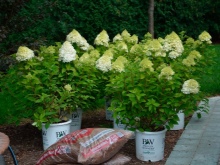


Landing rules
The main point in growing hydrangeas is competent planting, which includes choosing a landing site, excavating a hole and shaping the soil. To plant your hydrangea properly, follow the guidelines below.
The right place is half the success if you want to plant hydrangeas in the open field. There are several requirements for the landing site.
- Moisture. Hydrangea loves plenty of moisture, but does not tolerate too much moisture.From stagnant water, the roots of this plant begin to rot, which affects both the flowers and the crown. A young plant should be watered at least once a week, more often in dry seasons. Avoid planting this plant in lowlands and wetlands.
- Lighting. Soft sunlight promotes the rapid growth of shoots and leaves of the shrub, accelerates the flowering of buds. Despite this, excessively aggressive sun rays negatively affect hydrangeas - from them its leaves turn yellow and wither. Choose a place where the plant would be under the sun in the morning and evening hours, and in the shade at noon. It is not worth placing a hydrangea completely in the shade, otherwise it will not be able to fully develop.
- Shelter. The place for planting hydrangeas should not only be properly lit, but also carefully sheltered from strong gusts of wind. Ideal would be the place where the shrub on one side will be protected by the wall of the house or a dense fence. If this option is not possible, provide the plant with a strong support.
- The soil. If the hydrangea is really whimsical for something, then this is the type of soil in which it will have to grow. It should be rich and nutrient-rich soil, moderately oxidized. Hydrangea loves slightly acidic and acidic soils, but it has an extremely negative attitude towards alkaline soils.
- Neighborhood. An important aspect of choosing a place for a hydrangea is the closest neighborhood of the future shrub. If we talk about the aesthetic side of the issue, then this plant will look best together with hosta or astilba. If you want the plant to fully and quickly develop, you should refuse to plant it near trees or other shrubs, especially with a superficial root system. Plants with more developed roots will suck out all the soil from the moisture, and the hydrangea bush will grow underdeveloped and weak.
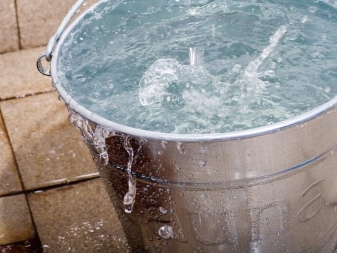

It is not enough just to find a place and dig a hole of a certain size there. Planting site preparation is also one of the important procedures that can affect the future growth of the shrub.
- Cleaning. After you have chosen the optimal place for planting the plant, clear it of weeds, remove all debris, stones, roots and twigs. For more efficient soil cultivation, you can dig up the area with a shovel. In order to fertilize the ground already at this stage, you can add several buckets of peat to the soil at the time of digging, and then thoroughly loosen everything.
- Dimensions. After you have cleared the area of debris and weeds, start digging the hole yourself. For young seedlings not older than two years, a hole of 30 by 30 cm will be enough.For older plants over 4 years old, a hole of 50 by 50 cm should be enough.As the hydrangea has a branched root system, the hole should be not only deep, but also wide.
- Distance. If you plan to plant multiple hydrangeas using a hedge, plant them at least 70 cm apart. For normal planting of shrubs close to each other, leave about 1.5 m of free space.


In order to prepare the soil for planting shrubs as much as possible, you should mix sour high peat and fertile garden soil in a ratio of 2/3. Peat will raise the soil acidity level, which will allow the plant to quickly get used to the new place.
The seedlings also need to be prepared for planting. If you bought seedlings with SCS, then you do not need to prepare them, but if we are talking about hydrangeas with ACS, then the roots of the plant should be soaked in a special stimulating solution to accelerate root formation.

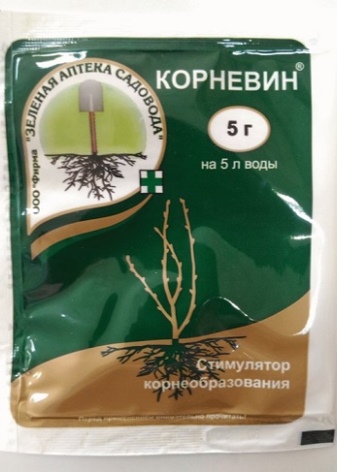
The process of planting a hydrangea itself will include several steps.
- Water the hole thoroughly 2-3 hours before planting the seedling.
- Taking care not to damage the root system of the seedling, place it in the hole, spreading its roots so that in the future they will grow in several directions. The roots should lie flat in the hole, without bends.
- Using prepared soil from peat and earth, fill the roots of the seedling up to the root collar. Make sure that the soil is evenly distributed in the pit, does not form voids or niches.
- Use a spatula to lightly compact the soil around the stem of the seedling.
- Water thoroughly again (depending on the age of the plant - from 1 to 3 buckets per bush) and make sure that the water does not stagnate at the root collar.
- There is a possibility that the soil around the plant may settle slightly after watering. In this case, you should use additional soil to level the landing site with the ground level.
If you do not do this, excess moisture will always accumulate in the roots of the shrub.
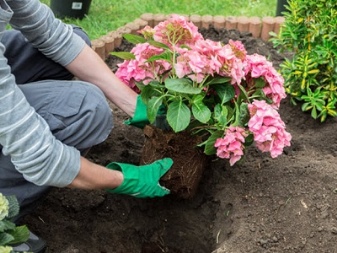

Care advice
Garden hydrangea care does not end with planting and watering. In order for the plant to fully develop and delight you with its delicate flowering every year, follow the recommendations of specialists for the care of this shrub.
Moisture
The first thing an inexperienced gardener may encounter is low moisture levels near the plant. Hydrangea does not tolerate high humidity and water accumulation at the roots, but this flower needs water for active growth and flowering. Do not allow the plant to completely dry out the soil - it should always be moderately moist. In the dry season, the amount of watering should be increased. After each watering procedure, the land around the plant should be loosened and cleaned of weeds.

Mulching
For long-term preservation of moisture in the soil around the plant, it is worth resorting to mulching. Mulch or mulch material is a mixture of natural materials designed to keep the soil from drying out. Peat, fallen leaves (cleared of parasites) or even coniferous bark can be used as such material. Choose the thickness of the mulch layer yourself, depending on the age of the flower, but experts advise leaving at least 5-8 cm.


Pruning
Hydrangea belongs to garden shrubs that can grow up to 30 cm in height in one season, and therefore this plant needs regular and preventive pruning. The procedure should be carried out in the fall, after the buds have dried. At this point, it is advised to cut about half of the growth of the entire plant. Preventive pruning is carried out every spring even before sap flow and a period of active growth. Here you should cut off all dry, diseased or broken branches, as well as shoots growing inside the plant.
When pruning, a lot depends on the characteristics of a particular type of hydrangea.
- If we are talking about a tree-like variety of hydrangea, then autumn pruning should be thorough - no more than 20 cm should remain from the ground to the tops of the plant.
- In large-leaved varieties of hydrangeas, only dried and discolored inflorescences should be removed. The shoots and branches themselves should not be touched - new shoots will appear from them next spring.
- In panicle type hydrangeas, young shoots also grow from old branches. First, all weak, frozen and dry branches from the plant should be removed, then strong and adult shoots should be cut for 2-3 buds. When the plant is already growing up, it may need rejuvenation - for this, no more than 10 of the strongest shoots and branches should be left every season, and the rest should be completely cut off.


Top dressing
Like any garden plant, hydrangea needs to be fed with natural and mineral nutrients. They strengthen the branches of the plant, and the inflorescences themselves make them more lush and bright.
The bait composition must necessarily include: nitrogen, potassium and phosphorus (during the formation of buds in spring), as well as superphosphate (after the flowering period).



Wintering
Fortunately, hydrangea is a frost-hardy shrub that can survive even the harshest winters, but young and immature plants may need a reliable shelter.It will not only prevent the plant from breaking under the pressure of the cold wind, but also will not allow it to freeze under the snow. For the fall season, installing a shelter is optional, but the plant should be supported against gusts of wind.


For information on how to properly plant a hydrangea in open ground, see the next video.



































































The comment was sent successfully.